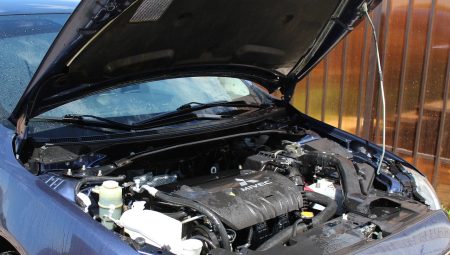Have you ever wondered why your car seems to sound like a rumbling beast on the road? Engine mounts might just be the silent culprits behind that noise. These unsung heroes play a vital role in stabilizing your engine and minimizing vibrations. Think of them as the cushions that absorb shocks, ensuring a smoother ride. However, when these mounts wear out or become damaged, they can transform your vehicle into a noisy nuisance, impacting not just the sound but also the overall comfort of your ride.
In essence, understanding the relationship between engine mounts and road noise is crucial for any vehicle owner. It’s like having a secret weapon in your arsenal to combat unwanted sound. By keeping an eye on these mounts, you can maintain a peaceful driving experience and enhance your vehicle’s performance. So, the next time you hear those unsettling sounds, remember: it might be time to check your engine mounts!
The Role of Engine Mounts
Engine mounts are the unsung heroes of your vehicle, playing a critical role in ensuring a smooth ride. They act as the connective tissue between the engine and the vehicle frame, absorbing vibrations and shocks that occur during operation. Imagine driving a car without these mounts; it would feel like you’re on a roller coaster, with every bump and jolt transmitted directly to your body!
These mounts not only stabilize the engine but also help in reducing noise that can be distracting and uncomfortable for passengers. By keeping the engine securely in place, they prevent excessive movement that can lead to unwanted sounds. Without effective engine mounts, you might find yourself enduring a cacophony of noise, making your driving experience far less enjoyable.
In summary, engine mounts are essential for:
- Vibration Dampening: They minimize engine vibrations that can affect comfort.
- Noise Reduction: They help keep cabin noise to a minimum.
- Engine Stability: They ensure the engine remains securely attached to the chassis.
Understanding the role of engine mounts is vital for recognizing their impact on your vehicle’s overall performance and passenger comfort. So, the next time you’re cruising down the road, remember that your engine mounts are hard at work, keeping your ride smooth and quiet!
How Worn Mounts Affect Noise Levels
Ever wondered why your ride suddenly feels like a bumpy roller coaster? Worn engine mounts are often the silent culprits behind increased noise and vibrations in your vehicle. These mounts, designed to keep your engine stable, can deteriorate over time due to wear and tear, exposure to harsh conditions, or even just age. When they start to fail, you’ll notice that the smoothness of your drive takes a hit. Imagine trying to enjoy a peaceful drive while your engine rattles like a maraca!
As these mounts wear out, they lose their ability to absorb vibrations, leading to an uptick in road noise. You might hear clunking sounds or feel excessive shaking, especially when accelerating or hitting bumps. It’s like your car is trying to communicate that something’s not right. Ignoring these signs can lead to further damage, impacting not just your comfort but also the overall performance of your vehicle.
To illustrate the impact, consider this table that highlights the effects of worn mounts:
| Signs of Worn Mounts | Impact on Noise Levels |
|---|---|
| Clunking or banging sounds | Increased cabin noise |
| Excessive vibrations felt in the steering wheel | Unpleasant driving experience |
| Engine misalignment | Higher road noise |
In summary, keeping an eye on your engine mounts is crucial. They play a vital role in ensuring a quiet, comfortable ride. So, next time you notice those pesky sounds, remember that it might just be your engine mounts asking for some attention!
Impact on Vehicle Performance
Engine mounts play a critical role in the overall performance of your vehicle. Think of them as the unsung heroes that keep everything in harmony. When these mounts are in good condition, they effectively absorb vibrations and keep the engine stable, allowing for a smooth driving experience. However, when they start to wear out or become damaged, the consequences can be significant.
Worn engine mounts can lead to a host of performance issues, including:
- Increased vibrations: This can make the ride feel rough and uncomfortable.
- Poor handling: The vehicle may not respond as well to steering inputs, making it harder to control.
- Engine misalignment: This can lead to premature wear on other components, affecting overall longevity.
In essence, if your engine mounts are compromised, it’s akin to trying to drive a car with a wobbly wheel. The connection between the engine and the chassis becomes unstable, leading to a less enjoyable and potentially unsafe driving experience. Thus, keeping a close eye on your engine mounts is essential for not just comfort, but also for maintaining optimal vehicle performance.
Maintenance Tips for Engine Mounts
Keeping your engine mounts in tip-top shape is essential for a smooth ride. Just like a sturdy foundation supports a house, engine mounts provide the stability your vehicle needs. Regular checks can help you catch any issues before they escalate. Start by inspecting the mounts for any visible cracks or wear. If you notice any oil leaks around the mounts, that’s a red flag!
Additionally, make it a habit to listen for unusual noises while driving. If you hear clunking or excessive vibrations, it might be time to get them checked out. Routine maintenance can save you from costly repairs down the line. Here are a few practical tips:
- Check the engine alignment regularly.
- Inspect for cracks or signs of wear every few months.
- Ensure that the bolts are tightened to the manufacturer’s specifications.
By staying proactive and vigilant, you can ensure your engine mounts are always working hard to keep your ride comfortable and quiet. Remember, a little maintenance goes a long way in preserving the performance of your vehicle!
When to Replace Engine Mounts
Knowing when to replace engine mounts is vital for maintaining a quiet and comfortable ride. Over time, these mounts can wear out due to constant stress and exposure to heat and vibrations. So, how do you know when it’s time for a change? Here are some signs to watch for:
- Excessive Vibration: If you feel your vehicle shaking more than usual, it might be a sign of worn mounts.
- Engine Movement: Noticeable engine movement during acceleration or deceleration can indicate failing mounts.
- Unusual Noises: Clunking or thumping sounds when driving over bumps can be a red flag.
Ignoring these symptoms can lead to further damage, not just to the mounts but potentially to the engine and transmission as well. Regular inspections can help catch these issues early, ensuring your vehicle runs smoothly and quietly. Remember, replacing engine mounts is not just about comfort; it’s about preserving the integrity of your vehicle’s performance.
Frequently Asked Questions
- What are engine mounts and why are they important?
Engine mounts are essential components that secure the engine to the vehicle’s frame. They absorb vibrations and keep the engine stable, ensuring a smoother ride and better handling.
- How can I tell if my engine mounts are worn?
Signs of worn engine mounts include increased vibrations, unusual noises, and a noticeable shift in the engine’s position. If you feel more bumps while driving, it might be time to check your mounts.
- What maintenance do engine mounts require?
Regular inspections are key! Look for cracks or wear on the mounts. Keeping them clean and ensuring they are securely fastened can help prolong their life.
- When should I consider replacing my engine mounts?
If you notice excessive noise, vibrations, or if the engine appears misaligned, it’s likely time for a replacement. Don’t wait too long, as this can lead to more significant vehicle issues!





